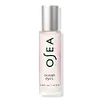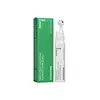What's inside
What's inside
 Key Ingredients
Key Ingredients

 Benefits
Benefits

 Ingredients Side-by-side
Ingredients Side-by-side

Water
Skin ConditioningGlycerin
HumectantUndaria Pinnatifida Extract
Skin ConditioningCorallina Officinalis Extract
Skin ConditioningCaprooyl Tetrapeptide-3
Skin ProtectingChenopodium Quinoa Seed Extract
Skin ConditioningCaffeine
Skin ConditioningSodium Hyaluronate
HumectantAlbizia Julibrissin Bark Extract
MaskingDextran
Darutoside
Skin ConditioningHydrolyzed Gardenia Florida Extract
AntioxidantMaltodextrin
AbsorbentSodium Benzoate
MaskingPotassium Sorbate
PreservativeCitric Acid
BufferingLonicera Japonica Flower Extract
Skin ConditioningLonicera Caprifolium Flower Extract
PerfumingWater, Glycerin, Undaria Pinnatifida Extract, Corallina Officinalis Extract, Caprooyl Tetrapeptide-3, Chenopodium Quinoa Seed Extract, Caffeine, Sodium Hyaluronate, Albizia Julibrissin Bark Extract, Dextran, Darutoside, Hydrolyzed Gardenia Florida Extract, Maltodextrin, Sodium Benzoate, Potassium Sorbate, Citric Acid, Lonicera Japonica Flower Extract, Lonicera Caprifolium Flower Extract
Water
Skin ConditioningButylene Glycol
HumectantGlycerin
HumectantPropanediol
SolventNiacinamide
SmoothingDimethicone
EmollientPhenyl Trimethicone
Skin ConditioningCaffeine
Skin Conditioning1,2-Hexanediol
Skin ConditioningSqualane
EmollientPolysorbate 20
EmulsifyingPolysilicone-11
PCA Dimethicone
Skin ConditioningPolyacrylate Crosspolymer-6
Emulsion StabilisingCarbomer
Emulsion StabilisingBoron Nitride
AbsorbentSodium Polyacryloyldimethyl Taurate
Emulsion StabilisingCI 77891
Cosmetic ColorantTromethamine
BufferingDimethiconol
EmollientSynthetic Fluorphlogopite
Glyceryl Caprylate
EmollientEthylhexylglycerin
Skin ConditioningAdenosine
Skin ConditioningDisodium EDTA
Camellia Sinensis Leaf Extract
AntimicrobialArginine
MaskingCyclodextrin
AbsorbentHydroxypropyl Cyclodextrin
MaskingMaltodextrin
AbsorbentCitric Acid
BufferingSodium Hyaluronate
HumectantTin Oxide
AbrasiveHydrolyzed Hyaluronic Acid
HumectantSodium Hyaluronate Crosspolymer
HumectantHyaluronic Acid
HumectantTocopherol
AntioxidantSodium Acetylated Hyaluronate
HumectantWater, Butylene Glycol, Glycerin, Propanediol, Niacinamide, Dimethicone, Phenyl Trimethicone, Caffeine, 1,2-Hexanediol, Squalane, Polysorbate 20, Polysilicone-11, PCA Dimethicone, Polyacrylate Crosspolymer-6, Carbomer, Boron Nitride, Sodium Polyacryloyldimethyl Taurate, CI 77891, Tromethamine, Dimethiconol, Synthetic Fluorphlogopite, Glyceryl Caprylate, Ethylhexylglycerin, Adenosine, Disodium EDTA, Camellia Sinensis Leaf Extract, Arginine, Cyclodextrin, Hydroxypropyl Cyclodextrin, Maltodextrin, Citric Acid, Sodium Hyaluronate, Tin Oxide, Hydrolyzed Hyaluronic Acid, Sodium Hyaluronate Crosspolymer, Hyaluronic Acid, Tocopherol, Sodium Acetylated Hyaluronate
 Reviews
Reviews

Ingredients Explained
These ingredients are found in both products.
Ingredients higher up in an ingredient list are typically present in a larger amount.
Caffeine is most associated with coffee, tea, and cacao. In skincare, it helps with calming inflammation and is rich in antioxidants.
While caffeine is used to treat cellulite and and dark circles, further studies are needed to prove this. It has been believed to help with these skin conditions due to its ability to dilate blood vessels and increase blood flow.
Some studies are looking into caffeine's ability to protect against UV rays.
Learn more about CaffeineCitric Acid is an alpha hydroxy acid (AHA) naturally found in citrus fruits like oranges, lemons, and limes.
Like other AHAs, citric acid can exfoliate skin by breaking down the bonds that hold dead skin cells together. This helps reveal smoother and brighter skin underneath.
However, this exfoliating effect only happens at high concentrations (20%) which can be hard to find in cosmetic products.
Due to this, citric acid is usually included in small amounts as a pH adjuster. This helps keep products slightly more acidic and compatible with skin's natural pH.
In skincare formulas, citric acid can:
While it can provide some skin benefits, research shows lactic acid and glycolic acid are generally more effective and less irritating exfoliants.
Most citric acid used in skincare today is made by fermenting sugars (usually from molasses). This synthetic version is identical to the natural citrus form but easier to stabilize and use in formulations.
Read more about some other popular AHA's here:
Learn more about Citric AcidGlycerin is already naturally found in your skin. It helps moisturize and protect your skin.
A study from 2016 found glycerin to be more effective as a humectant than AHAs and hyaluronic acid.
As a humectant, it helps the skin stay hydrated by pulling moisture to your skin. The low molecular weight of glycerin allows it to pull moisture into the deeper layers of your skin.
Hydrated skin improves your skin barrier; Your skin barrier helps protect against irritants and bacteria.
Glycerin has also been found to have antimicrobial and antiviral properties. Due to these properties, glycerin is often used in wound and burn treatments.
In cosmetics, glycerin is usually derived from plants such as soybean or palm. However, it can also be sourced from animals, such as tallow or animal fat.
This ingredient is organic, colorless, odorless, and non-toxic.
Glycerin is the name for this ingredient in American English. British English uses Glycerol/Glycerine.
Learn more about GlycerinMaltodextrin is a polysaccharide. It is derived from starch such as rice, corn, wheat, or potato starch.
In food, Maltodextrin is used to improve the texture and thicken a product. Due to its structure, it can help create a gel texture. As an emulsion stabilizer, it helps keep the ingredients in a product together.
As a polysaccharide, Maltodextrin has moisturizing properties. Polysaccharides are a type of carbohydrate. The top layer of skin uses polysaccharides to retain water, keeping the skin hydrated.
Maltodextrin is water soluble and has a sweet taste.
Learn more about MaltodextrinSodium Hyaluronate is hyaluronic acid's salt form. It is commonly derived from the sodium salt of hyaluronic acid.
Like hyaluronic acid, it is great at holding water and acts as a humectant. This makes it a great skin hydrating ingredient.
Sodium Hyaluronate is naturally occurring in our bodies and is mostly found in eye fluid and joints.
These are some other common types of Hyaluronic Acid:
Learn more about Sodium HyaluronateWater. It's the most common cosmetic ingredient of all. You'll usually see it at the top of ingredient lists, meaning that it makes up the largest part of the product.
So why is it so popular? Water most often acts as a solvent - this means that it helps dissolve other ingredients into the formulation.
You'll also recognize water as that liquid we all need to stay alive. If you see this, drink a glass of water. Stay hydrated!
Learn more about Water